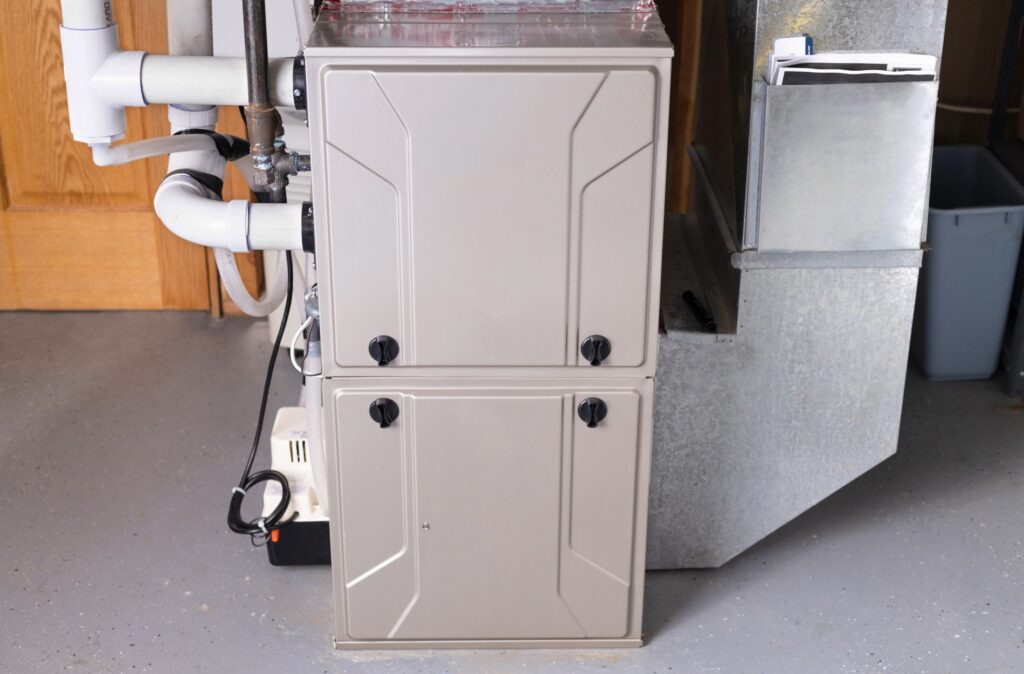When temperatures drop in Orem, the last thing any homeowner wants is a furnace that blows cold air. You expect consistent heat, especially during those cooler nights when staying warm isn’t a luxury—it’s a necessity. So when your furnace kicks on but doesn’t heat the house, it’s frustrating and confusing. Most homeowners expect the issue to be something simple, but it can be tricky to pinpoint the cause without some basic troubleshooting steps.
A working furnace isn’t just about comfort—it keeps your home safe and your pipes from freezing. That’s why it’s important to address the problem quickly rather than let it continue. Whether it’s something as small as a setting on your thermostat or something more serious like ignition failure, narrowing it down with a step-by-step look can help you understand what to expect as you move forward. Below are the most common areas to check if your furnace in Orem is blowing cold air.
Check Your Thermostat First
Start with the thermostat. It sounds overly simple, but many heating issues begin with settings that were accidentally changed. Whether it’s a family member adjusting the temperature or a new schedule programmed into the unit, slight changes can cause the furnace to stop producing warm air.
Here’s what to check:
– Make sure the thermostat is set to “Heat” and not still on “Cool” or “Auto.”
– Look at the temperature setting. It should be a few degrees above the current indoor temperature for the furnace to kick in.
– Check for any flashing lights, error codes, or battery warnings on digital models.
– If your thermostat runs on batteries, try replacing them, especially if the display is dim or unresponsive.
Some thermostats have programmable settings that can automatically switch modes depending on time of day. If the heating schedule is set incorrectly, the furnace may be running the blower without activating the heat function. If you recently had a power outage or changed the batteries, recheck the schedule settings to confirm nothing defaulted.
If everything looks correct and the furnace is still blowing cold air, then the issue is likely with the unit itself and not just the controls.
Look at the Furnace Filter and Airflow
The furnace filter plays a role in both indoor air quality and furnace performance. When it’s clogged with dust, dirt, or pet hair, airflow becomes restricted. This can cause the heat exchanger to overheat or shut down, leaving the fan to run without producing warm air. If you notice cool air coming from the vents but the thermostat is working fine, the filter is the next thing to inspect.
Follow these steps to check the filter:
1. Turn off the furnace at the power switch or breaker.
2. Locate the air filter panel, usually near the return air duct or right beside the main unit.
3. Slide out the filter and hold it up to a light source. If little or no light passes through, it needs replacing.
4. Insert a clean filter facing the correct direction, following the arrows printed on the frame.
Besides the filter, it’s also a good idea to walk through your house and look for blocked or closed vents. Furniture, curtains, or even dust buildup can limit airflow from room vents. This doesn’t just affect comfort—it can also cause your system to overwork or shut down parts of the heating process. Check both supply and return vents to make sure air is moving freely throughout your home.
If the furnace continues to blow cold air with a clean filter and clear vents, it may be time to look deeper into the system’s heating components.
Inspect the Pilot Light or Electronic Ignition
If your thermostat and filter both check out but your furnace is still pushing cold air into your living space, it may be tied to how the system actually ignites. The way your furnace heats depends on whether it has a pilot light or an electronic ignition system.
Older furnaces often use a standing pilot light. If this flame goes out, your furnace can’t produce heat. This can happen if there’s a strong draft, dirty components, or issues with the thermocouple. If you look inside the access panel and don’t see a small flame, the pilot light is likely out. Before attempting to relight it, check your furnace’s instructions on the inside panel. If you’re not comfortable attempting it or if it keeps going out after being relit, it’s time to stop and let our professionals take a look.
Newer units use electronic ignition systems, which can fail without warning. You might hear clicking when the furnace starts up, but no ignition occurs. In some cases, there may be a flashing error code visible through a small window. These codes can help pinpoint the problem, even though many are difficult to interpret without equipment and training. Igniters are fragile and can crack or wear out, which often leaves homeowners in a frustrating loop—they hear the system turn on, feel air moving, but it’s never warm.
If you’re dealing with intermittent heat or you notice the blower continues to run without ignition, the issue may be with the flame sensor, ignition board, or gas flow. These components aren’t easy to test safely without experience. Rather than risking damage or injury, contacting our technicians ensures it gets addressed the right way.
Check Ductwork for Leaks or Blockages
Even if everything inside the furnace is working well, problems in the ductwork can still result in cold air coming through your vents. Duct leaks, poorly connected joints, or blockages can prevent heated air from reaching your living space, especially in rooms farthest from the unit.
Hot air can escape into unheated spaces, like attics or basements, before it ever makes it into your home. That’s why it’s important to periodically check visible ductwork, especially in areas where connections are exposed. Look for signs of:
– Loose or disconnected duct joints
– Holes or gaps in older duct tape or unraveled insulation
– Dust buildup or debris restricting airflow inside open ducts
If you notice one room is much colder than the others even when the furnace is running, that’s a sign the heated air isn’t circulating evenly, possibly because of a blockage or poorly sealed duct. While you can inspect accessible areas, most homeowners can’t see the full layout. Our technicians have the tools to check the condition of ductwork that’s behind walls or in tight crawl spaces.
In some homes, older ducts may have collapsed or shifted over time, leading to major airflow issues. Sealing and insulating ducts helps trap more heat where it’s needed and keeps your furnace from overcompensating by running longer than needed.
Get Back to Warm Comfort in Orem
A furnace blowing cold air can be a serious interruption to your home’s comfort, especially when nights in Orem start to chill. Thankfully, many of the common causes can be caught early with a focused inspection. From a misprogrammed thermostat and dirty filters to failed igniters and leaking ductwork, each part of the system plays a role in overall performance.
Paying close attention to symptoms like constant fan operation, inconsistent heating, or unusual sounds can help you zero in on where things started going wrong. Equally important is knowing when a fix is beyond simple checking and requires a trained hand. Troubleshooting safely should always come first, especially when dealing with ignition systems or gas flow.
Being proactive when your furnace shows signs of trouble shortens downtime and reduces wear on the whole system. Whether you’re already experiencing cold air or want to be ready before temperatures drop further, staying informed gives you a better sense of what needs attention. When quick checks don’t solve the problem, getting our professionals involved helps restore heating to your home efficiently and safely.
If your furnace issues persist, The Heating and Cooling Guys Inc. are ready to help restore comfort to your home in Orem. Whether you’re dealing with a misbehaving thermostat, clogged airflow, or ignition problems, it may be time for furnace repair in Oremto get your system running as it should. For a quick estimate or to book a service visit, please contact us today.



